
Have you ever wondered how to make your sex life more thrilling and satisfying? Welcome to an exciting journey through the pages of the Kamasutra. Here, you’ll not only discover new sex positions but also dive into the true history and essence of this legendary book, debunking many myths and misconceptions along the way.
Ready to explore new realms of pleasure and satisfaction? Then join us on this adventure!
But before we dive in, let’s clear up a common misconception about the Kama Sutra. Here’s the truth that might surprise you:
The original Kama Sutra actually mentions only about a dozen and a half sex positions, and it does so very briefly and without any illustrations (which isn’t exactly helpful!). So, all those modern collections titled “Kamasutra Positions,” including ours, are not directly related to the original text.
The sex positions you’ll find here are a modern take on how to enjoy sex. Believe me, Vātsyāyana Mallanaga (the author of the Kama Sutra) would be shocked to see how we’re making love over a thousand years later!



Sorry for the provocation with these wild and crazy sex positions. Please, don’t attempt anything without proper medical insurance!)
I just wanted to intrigue you a bit and show that our catalog of sex positions has something for everyone.
So, don’t worry! Up next, you’ll see more realistic sex positions that are just as exciting!
We’ll definitely revisit the Kama Sutra later (on this page) and dive into more details about this fascinating book. You’ll learn how and why the Kamasutra became famous worldwide.
But for now, let’s get to the main event – the sex positions you came here for!
Kamasutra sex positions categories:
1. Need for Speed position


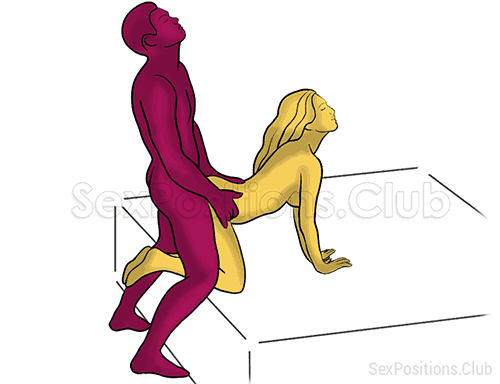
4. Gimlet position


6. Erotic position

7. 69 position

8. Stickman position
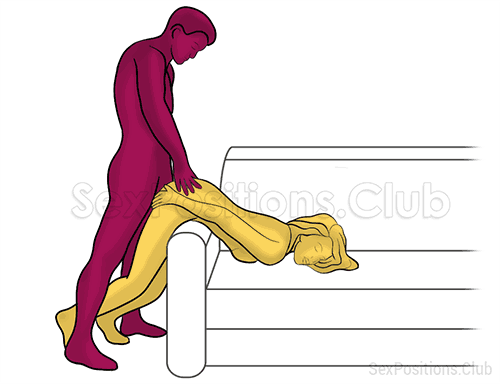

10. Orgazmic position
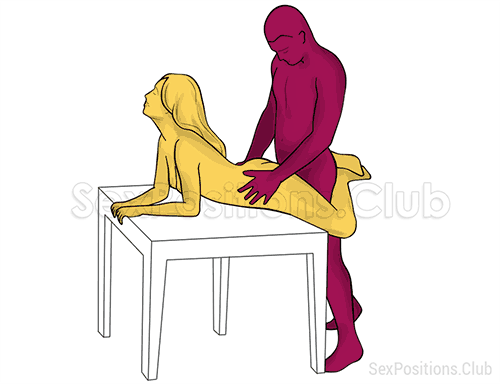

12. Wrestling position

13. Amazon position

14. Skewer position
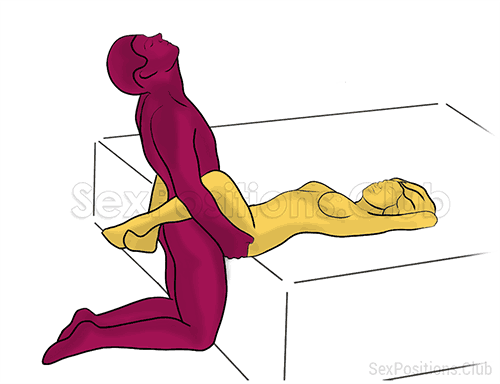
15. Lotus position

16. Bermuda triangle position


18. Descent position

19. Eagle position

20. Plank position


22. Overturned position

23. Pretzel position

24. Bung position

25. Scissor position

26. Delicacy position

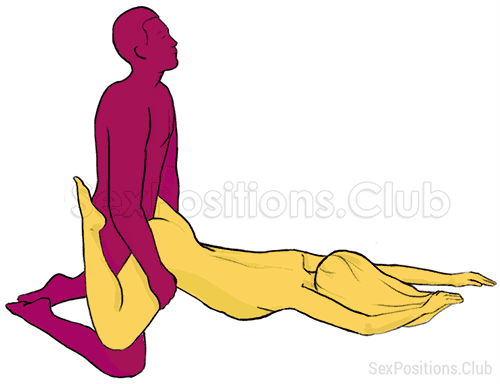
28. Punishment position
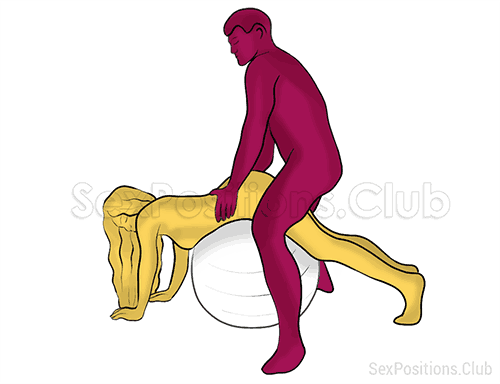
29. CAT position

30. Holiday position


32. Coffee table position


34. Slope position
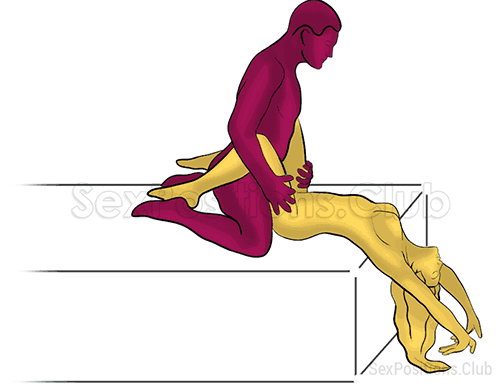

36. Cowgirl on the table position


38. Сatapult position

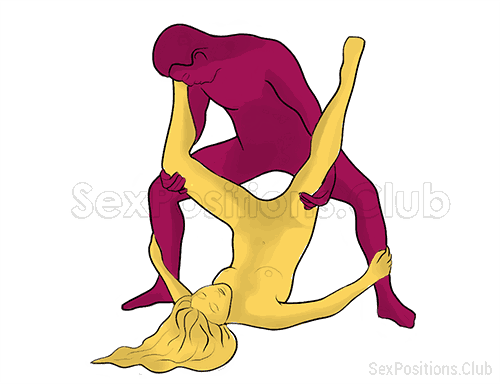
40. Frog position

If you want to learn more about the Kama Sutra, keep reading. Here’s what you’ll discover:
- The Kama Sutra: What Is It?
- What Does “Kama Sutra” Mean?
- What Does the Kamasutra Really Teach Us?
- The Main Idea of the Kamasutra
- Relationships Between Men and Women: What They Should Be
- Myths of the Kamasutra
- The Kamasutra and the Contents of the Book
- Who and When Created the Kamasutra?
- Who Was Vatsyayana Mallanaga?
- What Did the Author Attempt to Convey in the Kamasutra?
- For Whom Was the Kamasutra Written?
- How the Kamasutra Became Known All Over the World?
- The Man Who Discovered the Kamasutra
- How Richard Burton Learnt about the Kamasutra
- The First Edition of the Kamasutra
- The Acceptance of the Kamasutra in Europe
- Why and How the Kamasutra Became So Popular
- What does the Kamasutra tell us about sex
- The Kamasutra in Today’s Context
The Kama Sutra: What Is It?

Contrary to popular belief, the Kamasutra isn’t about sexual gymnastics. It represents a collection of ancient Indian knowledge and traditions, compiled many centuries ago.
The Kama Sutra is a scientific treatise on the experience of true love, aimed at harmonizing and settling the multi-level relationship between a man and a woman. It covers everything from daily life to the intimate and emotional aspects of their bond, guiding them towards achieving Kama (sensual satisfaction).
Through a thorough and serious investigation, the text offers a deep understanding of the true meaning of love between a man and a woman. It not only helps readers grasp the essence of love but also opens their minds to a better understanding of human nature and their partner’s as well.
What Does “Kama Sutra” Mean?
According to the literal translation from Sanskrit, “Kama Sutra” means “the Rule Book of Kama” or “Theory of Kama.” So, what does “Kama” mean to us, and what is its purpose?
Kama represents the sensual aspect of life, encompassing both physical and emotional pleasure. Indian culture emphasizes four main virtues or life goals that everyone should strive to achieve:
- Kama: The sensuous aspect of life, unveiling physical and emotional enjoyment.
- Artha: Cognition, competence, material prosperity, glory, and power.
- Dharma: Morality and wisdom.
- Moksha: Liberation.
These virtues are of equal importance and are essential for every human being. “Kama,” responsible for sensual pleasure, is the first step in one’s journey toward understanding their divine origins. That’s why the book is called “The Kama Sutra” or “The Kamasutra.”
What Does the Kamasutra Really Teach Us?
Given the context above, the reason behind the creation of the Kama Sutra becomes quite clear. This book is a compilation of the best religious and philosophical texts, serving as a guide dedicated to achieving “Kama” – one of the four most important life goals. Kama refers to the perception of sensual enjoyment, encompassing love, sexual satisfaction, desire, and passion.
Many people initially misunderstand the purpose of the Kamasutra, viewing it solely as a guide to physical closeness between a man and a woman. However, the Kama Sutra emphasizes that physical intimacy without emotional connection—without passion, sensuality, and love—is incomplete.
The Main Idea of the Kamasutra
If love is absent, you will never experience the true satisfaction that a sexual relationship can bring. You won’t fill your chakras with warmth and languor, nor will you relieve your body of the desire for love. Without love, the act becomes merely mechanical, similar to the way animals engage in mating.
In this case, you won’t succeed in the art of love, no matter how many intricate sexual positions you know from the Kama Sutra. The Kamasutra teaches that true satisfaction comes from a deep emotional and sensual connection, not just physical acts.
Relationships Between Men and Women: What They Should Be
The Man: According to the Kamasutra, a man should not only revel in sexual pleasure with his woman, but he should also support and cherish her, taking responsibility for her emotions. As a true male, his will is the rule, yet he remains in the hands of his woman, offering his confidence to her. To achieve this, he should create an environment that leaves her with no desire to seek someone else, someone more comforting or attractive.
The Woman: According to the Kamasutra, a woman’s mission is to provide her man with pleasure. Like the Garden of Eden, she must captivate and embrace him with warmth and care. She should not only be attractive in a sexual sense but also irreplaceable in all aspects of his life. By following these guidelines, her man will remain faithful, offering her a sense of freedom and making her more equal to him.
The Kama Sutra makes it clear that without respect, love, tenderness, and infatuation, any sexual position becomes a mere fulfillment of basic needs, like eating breakfast, relieving oneself, or drinking water. Such closeness, without deeper emotional connection, will eventually mean nothing, for both men and women.
Just as a flower planted in fertile soil and warmed by the sun delights the eye, so too will a sexual relationship, enriched with emotional appeal and closeness, elevate you to cloud nine. For this reason, learning and trying all the Kama Sutra’s positions can bring a fresh perspective to your sexual life, yielding great rewards, including the ultimate fruit of mutual love—children.
Myths of the Kamasutra

Many misconceptions about the Kama Sutra stem from the initial impressions formed by Europeans following the book’s translation at the end of the 19th century.
- Myth 1: The Kamasutra is just about sexual pleasure and sex positions. Less than 20 percent of the text focuses on describing various techniques and ways of lovemaking, with only fleeting mentions of specific sex positions. The majority of the content delves into a detailed exploration of gender relations in all aspects of daily life. The viewpoint of the ancient wandering monk-author often resonates closely with modern perspectives. Moreover, certain aspects of societal norms that may be unacceptable in contemporary society hold historical interest from the perspective of human psychological development.
- Myth 2: The Kamasutra contains original illustrations. The book originally had almost no illustrations. Most images associated with the Kama Sutra were added on its way to Europe. Often, these illustrations are actually examples of Mongolian pictorial art, not genuine depictions from the original text. Below, we’ll explain why these misconceptions became so widespread.
- Myth 3: The Kamasutra is the only book from that era dedicated to the art of love. In reality, the Kama Sutra is not an original work but a compilation and revision of existing texts by other authors on the topic. The text frequently references various authors, including Shatavahana and others. Later, other significant but lesser-known works were written by Indian philosophers, such as Ananga Ranga and Ratirahasya (Kāmashastra), which also warrant attention.
These myths highlight the importance of understanding the true essence of the Kamasutra, which goes beyond mere sexual pleasure to encompass a rich exploration of human relationships and emotional connections.
The Kamasutra and the Contents of the Book

The Kama Sutra is organized into seven parts, each consisting of several chapters, totaling 36 chapters in the entire book:
- Part 1: Introductory. Provides an introduction to the concept of love and intimacy. Discusses the meanings of love for both men and women. Classifies women and men and discusses their genitals.
- Part 2: On Sexual Union. Examines different types of kisses and foreplay. Describes various Kama Sutra sex positions and their impact on achieving deeper orgasms for both women and men. Includes information on paraphilia (unusual sexual interests) and love triangles involving a wife, husband, and husband’s lover.
- Part 3: About the Acquisition of a Wife. Offers advice on effectively seeking a future wife. Provides insights into courting a woman and arranging a wedding.
- Part 4: About a Wife. Focuses on the behavior and duties of women as wives.
- Part 5: About the Wives of Other People. Discusses seduction and attraction of other men’s wives.
- Part 6: About Courtesans. Devoted to the profession of courtesans (prostitutes) and their role in society.
- Part 7: On The Means of Attracting Others to One’s Self. Covers the art of attraction and techniques to enhance sexual desire between partners. Includes information on aphrodisiacs and substances that stimulate sexual desire.
For a more detailed understanding, it’s advisable to refer to the complete text of the Kamasutra book.
Who and When Created the Kamasutra?

The Kamasutra, written in Sanskrit, is attributed to Vatsyayana Mallanaga, an ancient philosopher and scientist from India. Rather than being its original author, he compiled and organized earlier works on love and sexuality. Throughout the text, Vatsyayana refers to various sources like the “Rules of Love” or “Kama Shastra,” framing the Kamasutra as a culmination of ancient wisdom presented in a more structured and scientific manner.
Who Was Vatsyayana Mallanaga?
Vatsyayana Mallanaga’s life remains mostly shrouded in mystery. Believed to have lived in the city of Khajuraho during the III-V centuries CE, he likely drew inspiration from the Gupta dynasty era, known for its flourishing literature and architecture. Khajuraho’s erotic sculptures offer a glimpse into the cultural context of his time.
What Did the Author Attempt to Convey in the Kamasutra?
Contrary to popular belief, the Kamasutra isn’t just a collection of sex positions. Vatsyayana Mallanaga aimed to create a comprehensive guide on achieving sensual happiness, or Kama. His work explores the nuances of physical intimacy alongside deep philosophical and cultural insights. It portrays sexual relationships as essential to human experience and personal growth, emphasizing their significance in a respectful and enlightened manner.
This approach makes the Kamasutra more than just a historical artifact—it’s a timeless exploration of human passion, desire, and the pursuit of fulfillment in love.
For Whom Was the Kamasutra Written?
Originally, the Kamasutra was intended for the elite classes of ancient India, specifically the educated and privileged. It served as a guide to systematize and depict their lives comprehensively. Access to this knowledge was also granted to courtesans and daughters of noble families, albeit with permission from their husbands in the case of married women. Thus, only a small segment of the population had access to the insights presented in the book. The Kamasutra covers various aspects of law, sociology, regional customs, art, love etiquette, and culture prevalent in India at that time.
In ancient India, texts like the Kamasutra served an educational purpose, aiming to instruct and enlighten. Initially restricted, over time—approximately 300 years—the book gradually became more accessible to the broader population. This accessibility allowed more people to delve into the refined art of love as depicted in the text.
Sexual relationships, viewed as integral to everyday life, are extensively classified in the Kamasutra based on types, groups, features, and the ages of participants. Ancient Indian scholars meticulously classified every aspect they described in their works, including the types of embraces, kisses, caresses, and stroking techniques found in the Kamasutra. This comprehensive approach reflects the book’s serious and profound content, characteristic of other scientific works of its time.
How the Kamasutra Became Known All Over the World?

From its inception until the early 19th century, the Kamasutra was primarily known within India’s elite circles, particularly among the higher castes. It wasn’t until the gradual colonization of India by the British Empire in the 18th and 19th centuries that the text began to gain global recognition. The British, in their exploration and development of Indian territory and culture, unearthed many ancient texts, including the Kamasutra.
The Man Who Discovered the Kamasutra
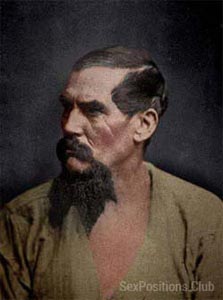
Credit for bringing the Kamasutra to the broader world goes to Sir Richard Francis Burton, a British traveler, translator, writer, ethnographer, poet, and linguist. Known for his adventurous spirit, Burton’s journey began after a less-than-successful stint at Oxford University led him to enlist in the East India Company’s campaign in 1842. During his service in India, Burton devoted himself to learning local languages and delving into Indian culture, mastering Hindi and several dialects over the years.
After a decade in India, Burton’s expertise as a linguist and cultural expert surpassed his military role. Recognizing his scholarly contributions, the Royal Geographical Society allowed Burton to retire from military service to pursue further research and exploration. His travels around the globe continued to yield discoveries and interpretations of cultural texts like the Kamasutra, shaping global perceptions of human intimacy and cultural diversity.
How Richard Burton Learnt about the Kamasutra
Richard Francis Burton, known for his progressive views on sexuality, first heard about the Kamasutra in 1842 while in Bombay. During a conversation with a local prostitute, he learned of a special book dedicated to the art of love—known as the Kamasutra. Intrigued by its existence, Burton obtained a copy and was immediately captivated. He famously remarked, “We British never knew of this kind of love-making. Had we known, we would not have ruined the lives of so many British virgins.”
Recognizing the significance of the Kamasutra beyond India, Burton spent the next decade meticulously studying and documenting its contents. It wasn’t until 1871, after years of extensive travel and research, that Burton began compiling his findings. This marked the beginning of Europe’s and subsequently the world’s introduction to the Kamasutra.
Burton’s passion for cultural exploration and his belief in the importance of understanding diverse sexual practices propelled him to share the Kamasutra’s teachings with a global audience. His efforts paved the way for discussions on love, intimacy, and cultural understanding that continue to resonate today.
The First Edition of the Kamasutra

Richard Burton’s progressive views on sexual and erotic literature often put him ahead of his time. In 1857, England’s strict “Law on sexually explicit publications” prevented the publication of such content, making it impossible for Burton to release the Kamasutra there. Undeterred, Burton and a like-minded colleague took matters into their own hands.
They established the Kama Sutra Society and obtained special permission to publish the first translation of the Kamasutra from Sanskrit in 1883. Despite not knowing Sanskrit himself, Burton relied on existing translations to create his version in a language he understood.
To this day, the origins and authenticity of Burton’s translation remain debated. Some speculate he worked from earlier translations rather than directly from the Sanskrit text. Nevertheless, Burton’s efforts through the Kama Sutra Society marked a significant milestone, bringing the ancient Indian text to a broader audience and sparking ongoing discussions about love, intimacy, and cultural exchange.
The Acceptance of the Kamasutra in Europe
When the first translation of the Kamasutra arrived in conservative England, it was met with a chilly reception. The content of the ancient Indian treatise clashed with the prevailing laws and public morality of the time, which deemed it too explicit. Only 250 copies were printed initially, and soon after, it was deemed pornographic and banned until 1963.
Following the Second World War, Europe saw the rise of a new generation with evolving values and a growing openness toward sexuality. This era marked the beginning of the sexual revolution, which challenged societal norms and restrictions. The renewed interest in sexual freedom gave the Kamasutra translation a new lease on life.
The book became a symbol of liberation from sexual taboos and received with great enthusiasm and curiosity. It quickly gained a reputation as the “Bible of sex,” admired for its insights into human intimacy and its celebration of sexual expression without judgment or restraint.
Why and How the Kamasutra Became So Popular
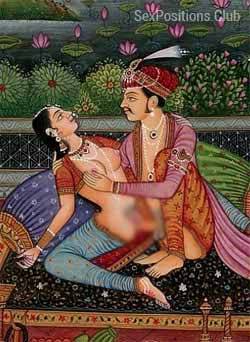
The widespread popularity of the Kama Sutra can be traced back to several key factors. Initially, the translation of the text in the late 19th century, accompanied by detailed illustrations of various sexual positions, sparked immense interest. These illustrations, though not part of the original text, quickly captured public attention and contributed to the book’s rapid dissemination.
However, this focus on sexual positions shifted the emphasis away from the deeper, more profound aspects of the Kamasutra. The original text emphasizes the holistic nature of sexual intimacy, including the relationship dynamics, the importance of foreplay, and the emotional connection between partners, transforming mere physical acts into expressions of love and connection.
In more recent decades, particularly since the 1970s, the rise of the pornography industry further propelled the Kama Sutra into popular culture. The book’s brand became associated primarily with its depictions of sexual positions, overshadowing its broader teachings on intimacy and relationships.
Despite this shift in focus, the demand for educational literature on sexuality continued to grow. The Kamasutra, with its blend of practical advice and philosophical insights, remains a cornerstone in discussions about sexual exploration and human relationships.
Today, the Kama Sutra is widely recognized but often misunderstood, with its name often evoking images of sexual positions rather than its holistic approach to love, intimacy, and human connection.
What does the Kamasutra tell us about sex

The Kamasutra offers profound insights into the meaning and elements of sex:
- What Sex Represents. The Kamasutra interprets sex as more than a physical act; it is a sacred union where the male and female principles merge not just physically but spiritually. It transcends mere physical pleasure to encompass emotions, feelings, and a deep sense of connection between lovers. In this context, sex becomes a sensual game where the woman is revered as a goddess, cherished and desired, while the man finds fulfillment not only in his own orgasm but in satisfying his beloved.
- Components of Sex. According to the Kamasutra, sex should be imbued with a sacramental quality, where every aspect—such as scents, surroundings, and lighting—enhances intimacy and foreshadows the act of love. The setting should be free of distractions, allowing the couple to focus entirely on each other’s mind, soul, and body. The prelude or sexual game is highlighted as an integral part of this ritual, allowing lovers to express their emotions and deepen their connection before reaching the climax of physical intimacy. Sometimes, the emotional and sensual buildup can be satisfying without the need for actual intercourse.
- Sexual Techniques. About one-fifth of the treatise is devoted to the techniques and methods of sex. The author calls various techniques and methods of caresses “arts”, and they are cited by the author in the section most famous in the world – “On Love Connection”. In this section the author sometimes mentions different positions for sex, but very superficially and in some cases it is even difficult to understand what exactly the author means. Sometimes only this section is considered to be the whole book, publishing its text rather inaccurately, not caring about a reliable translation. The book also classifies three types of men and women, eight types of embraces, 8 types of sounds made during lovemaking, 10 types of love, and so on – and in everything you can trace some numerical symbolism. These are mainly the numbers three and eight and multiples thereof. Many of the classifications used by the author are still relevant and interesting today.
The Kamasutra in Today’s Context

Interestingly, nowadays it’s common to equate any collection of sex positions with “The Kama Sutra.” Yet, this overlooks the depth and richness of the original treatise, which offers far more than just a catalog of sexual techniques. For those seeking more than just positions, delving into an authentic translation of the book reveals a wealth of valuable insights for modern couples.
One of the essential teachings of the Kamasutra is to not only seek your own pleasure but also to truly feel and understand your partner’s pleasure. By opening the doors to “Kama,” both partners can experience a deeper sense of happiness and genuine desire.
It’s important to debunk a prevalent myth about sex: the belief that knowing more positions makes you a better lover. In reality, what truly matters, according to women and other experts, is the emotional connection both partners share during sex. However, skillfulness and understanding of sexual positions also play a significant role.
Above all, the Kamasutra reminds us that true fulfillment in a sexual relationship comes from mutual pleasure and emotional connection. As the author wisely puts it:
Here is no happiness in love if pleasure is one-sided.
by Mika Miro.
I am very proud that how its explain here about Kamasutra. Thank you very much for clarifying. Very much appreciated.
Hi, i am Sai Kumar. i am so glad to go through the article on kamasutra in your blog as it swept away the wrong notions on the devine book. i would like to thank you for that. what my question is you mentioned that the book itself is treated as it just consists only sexual positions, it is because “It is used to publish the text incorrectly, without paying any attention to the authentic translation”. May i know which book is true translated and almost closer to the original vatsyayana’s kama sutra. if possible can you refer which book or author to follow in telugu language.
Considered as the basic work on love in Sanskrit literature, it was written by Vatsiaiana. The full title is Vātsyāyana kāma sūtra (‘The Aphorisms on Sexuality, from Vatsiaiana’). Chronologically, the author is located in the Gupta period (which took place between 240 and 550 AD).
Practicing breathing and stretching techniques (yoga) and studying Buddhist philosophies is a good prerequisite to understanding the Kama Sutra; we find balance within and without.
If you’re not in love and attracted to that person you are wasting precious time.
Brilliant explanation. Sex without love is a waste of time. I pray more people will understand and read the above.
Sex can always be fun. No law says it has to go with love, vows, and all the Judeo Christian rules that have been dictated to the populace. It’s not even necessary that you be in love with your partner. A nice loving bond between two people in a committed relationship is wonderful, deep and meaningful and makes for a good coupling, but a one night stand or sex with same gender as yourself can be ever so much fun also. We put to much importance on the human method of pro-creation. Many people will have a real fun time but then guilt themselves into being ashamed. I may have once in awhile had a few too many Long Island Iced Teas and got a little wild but it was never the sex I felt bad about the next day. I’m 61 now, not so wild anymore but I don’t regret my experiences and it’s fun to relive some memories.
Well said Laura
Thank you for coming on this site and telling us how wrong it is. Your genius is a blessing. Dont bother with this stupid book.
Well said S. Horn.
Thanks for the explain things of this topic. Hope to try someday.
Were can I find the original book at.
Hey Amanda N Luoma I hope you have found the book, if not I got the PDF version of the same you can simply get from me.
Hi, please can you please share with me the original version of the book, Kama-sutra?
Very interesting, please where can iI find this book. Am in Akwa Ibom State
Interesting. Am really impressed..
Very educating, thank you for your explanation.
Great. Me too, my sexual appetite never wanes but how beautiful to reflect about it the next day.
So fulfilling
What are the earliest systematic ties to this known curator of tantric positions and line systemic to use in witchcraft???
Some people use this in conjunction with witchcraft and perhaps others do not, I know of one wherewithal if California, who used this for sex witchcraft Associates with wiccan tradition.
I love this explanations and for that reason i pray that may the spirit of kamasutra embrace me and my wife to strenghten us in “LOVE” the more. Thanks. U. C.
It wasn’t until today that my future husband talk about this, as I have waited till we were together to introduce it to him. My desires, luv, passion and sexual satisfaction of two people is only for him. For I have wanted a partner my whole lufe i could be myself with. He found me and now we can show our luv in all ways.
I’m really happy for you!)
This is a wonderful life with kama sutra.
How fucking strong are your legs to do half of this weird ass position like come on you’ll last 3 seconds man no need to show off
I just stumbled upon this website. I’m looking forward to trying all of these positions. You have a very helpful site here and I hope couples around the world visit here. The world will be a far better place. Thank you.
Thank you for your good review!) I’m glad to hear it.
Thanks for sharing a clear picture of the book. In fact being an eclectic therapist and researcher, I am coming to a conclusion that every and any issue that mankind is facing has to do with his/ her intimate relationship & intimacy behavior.